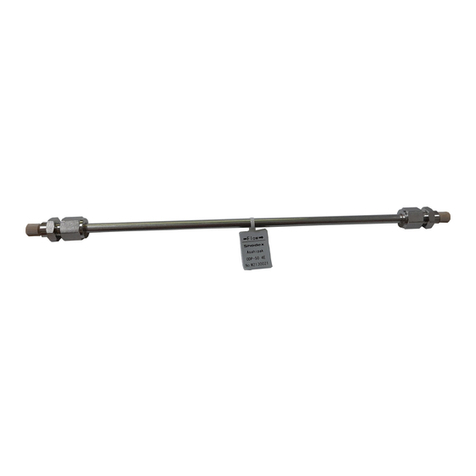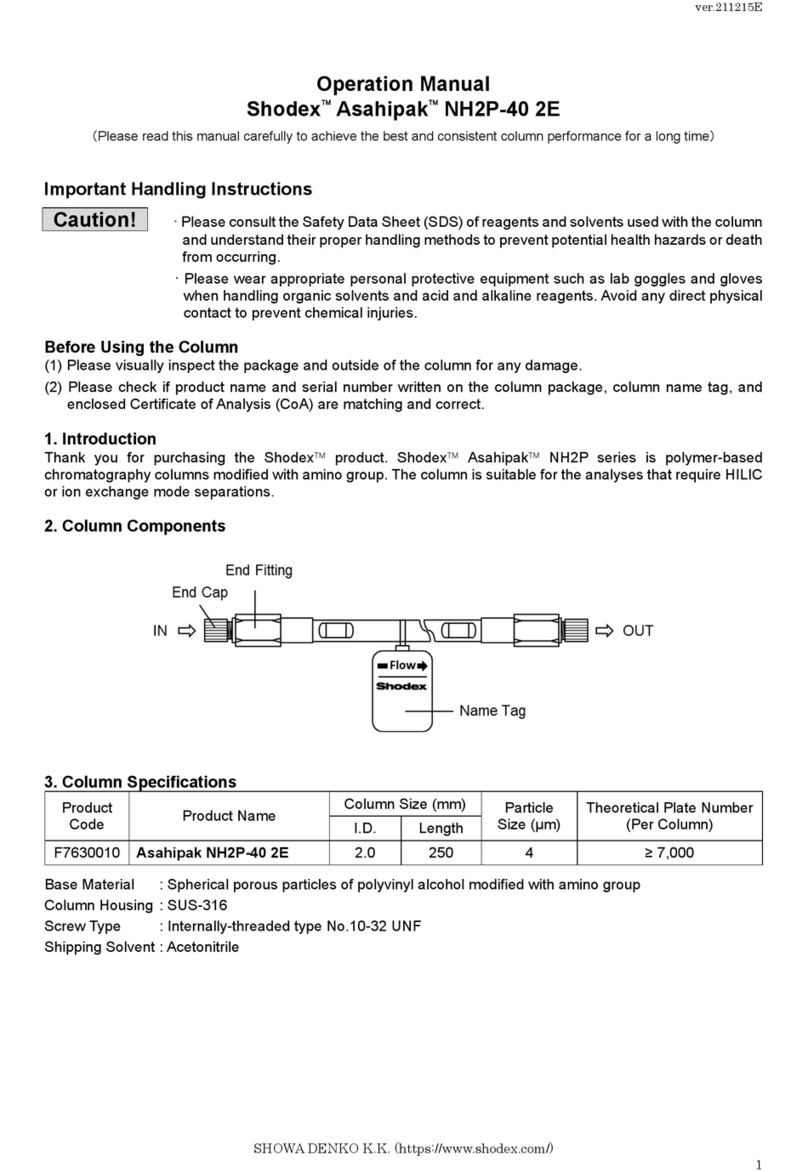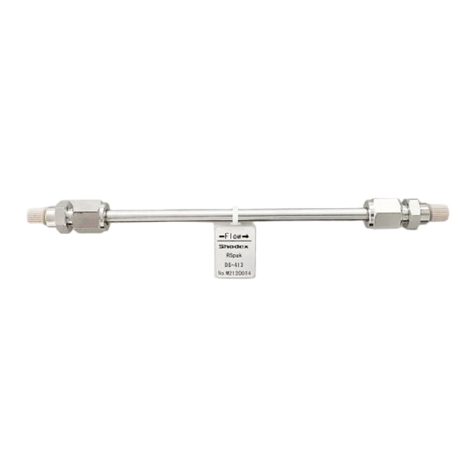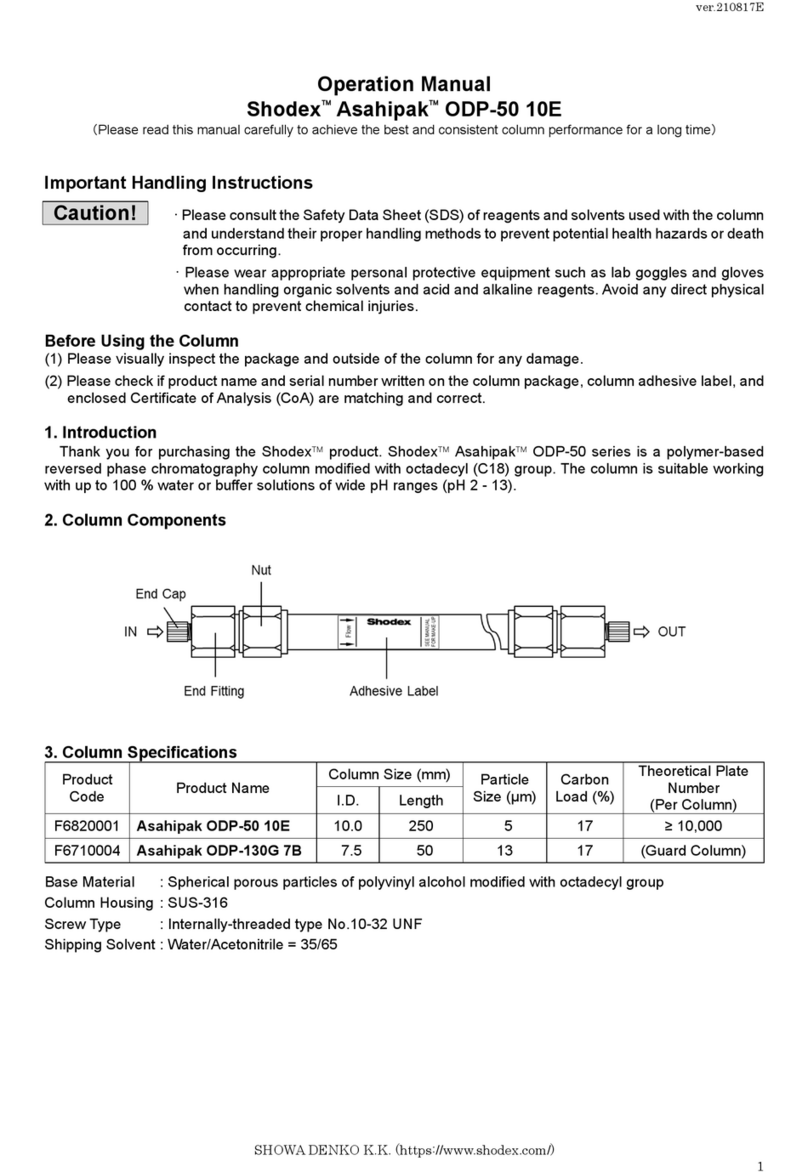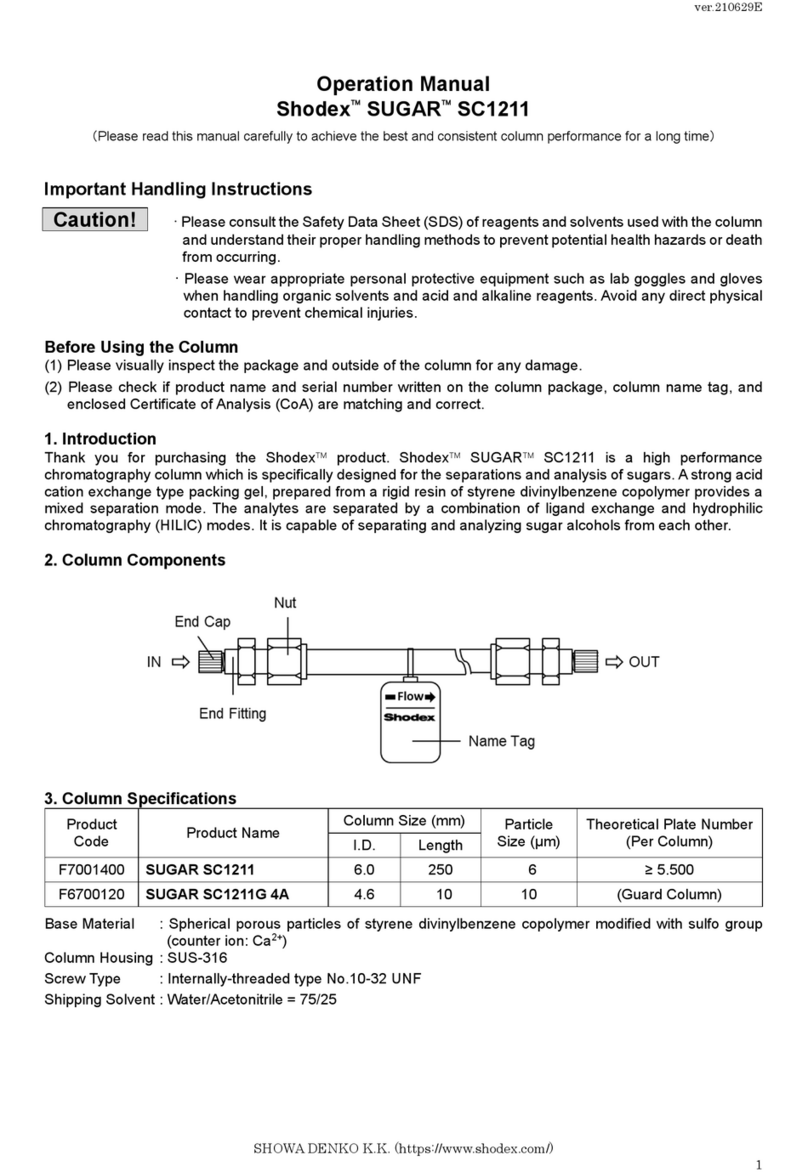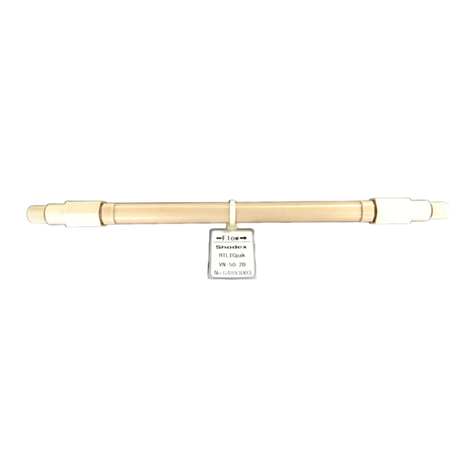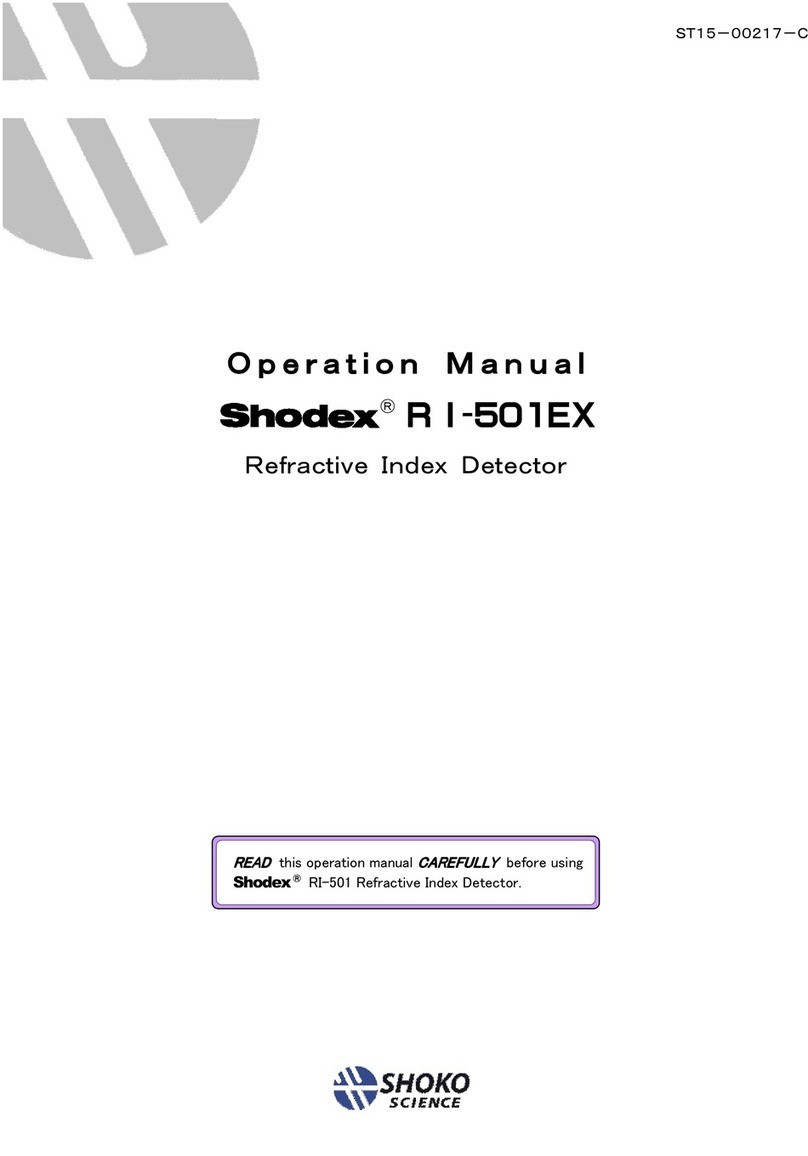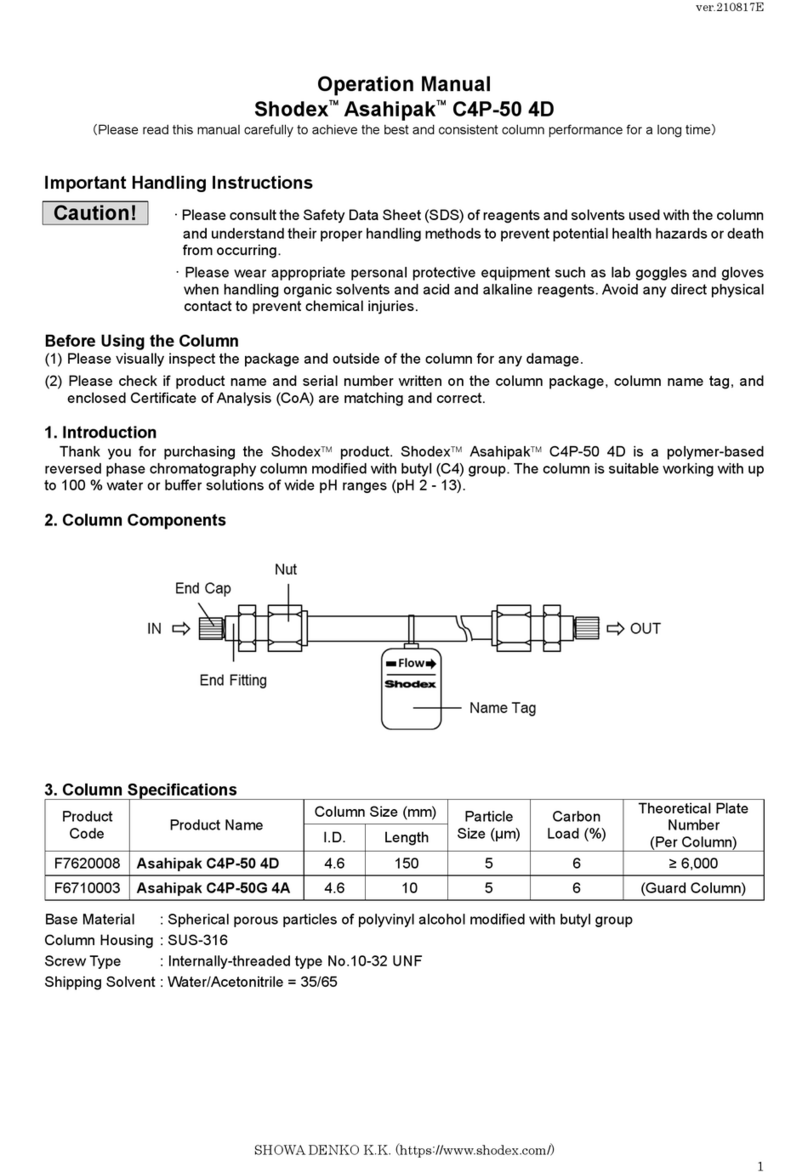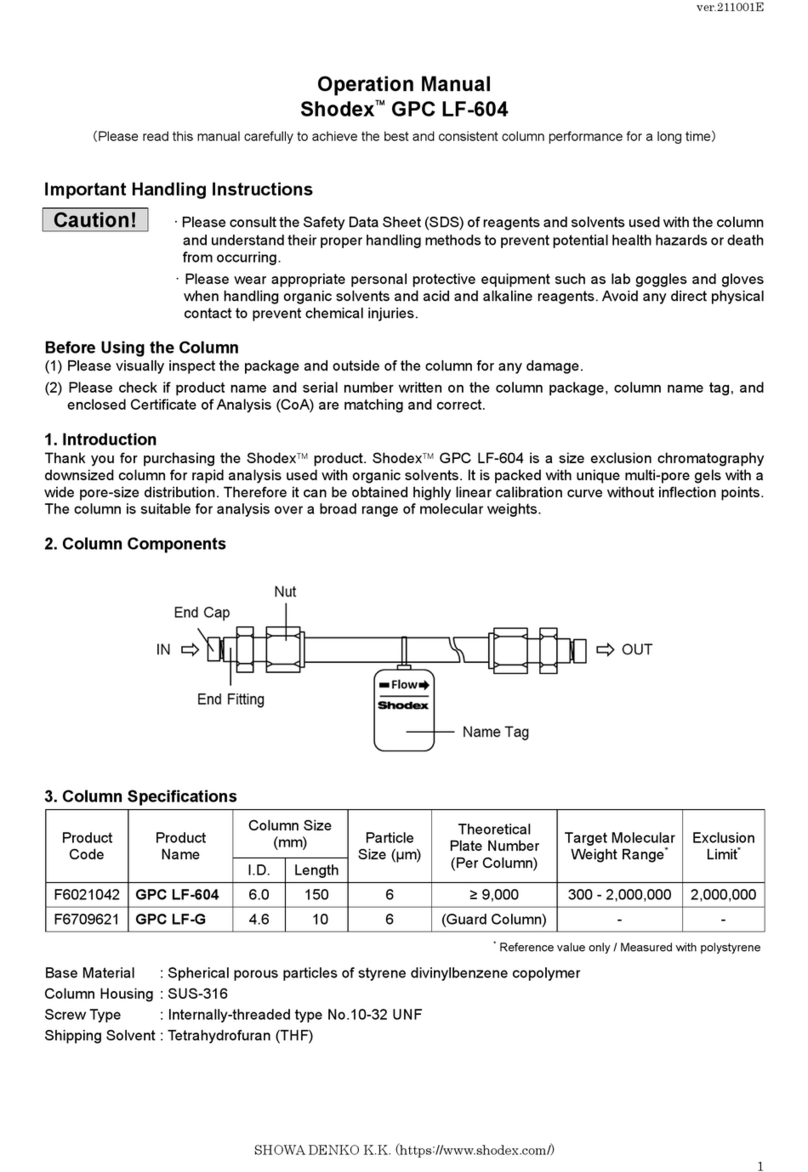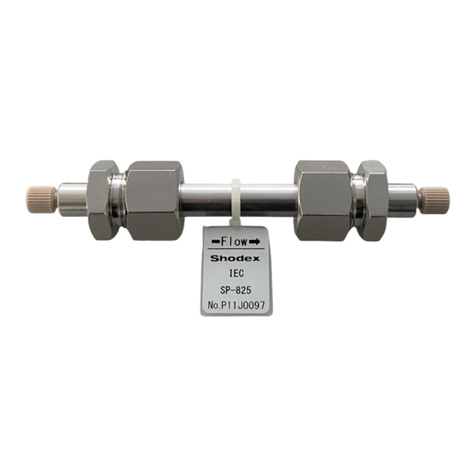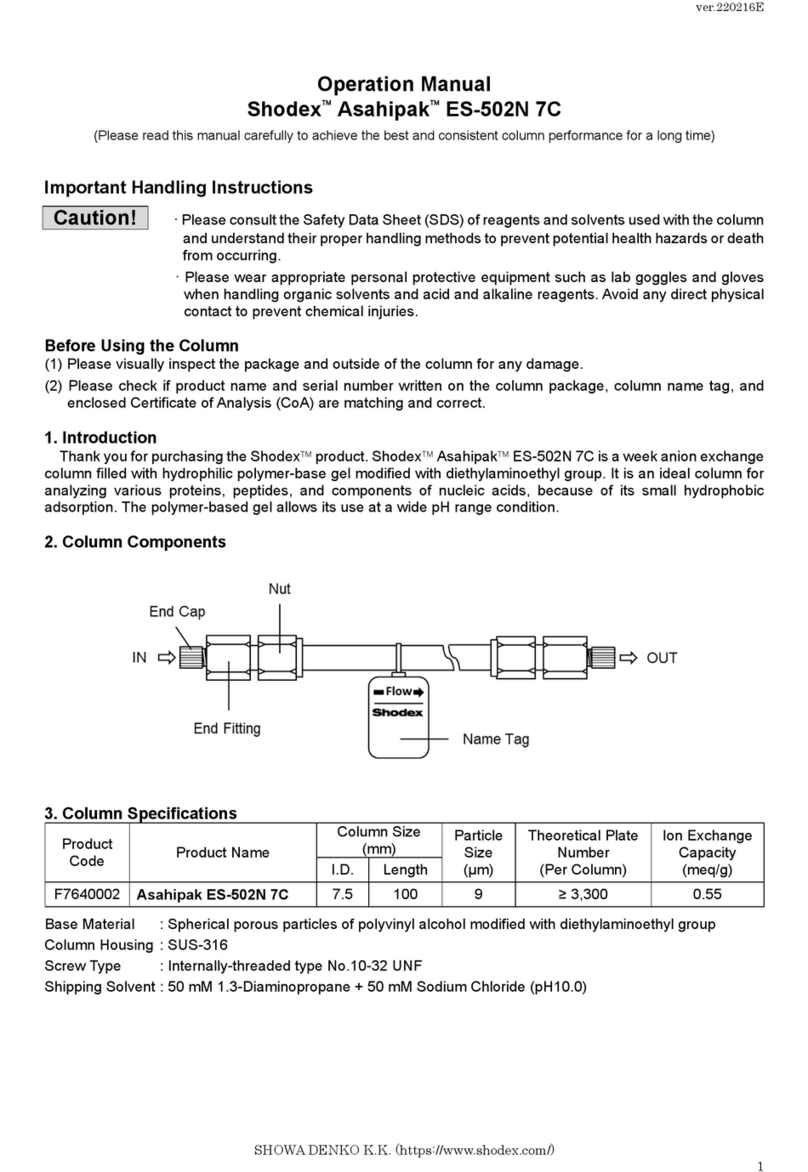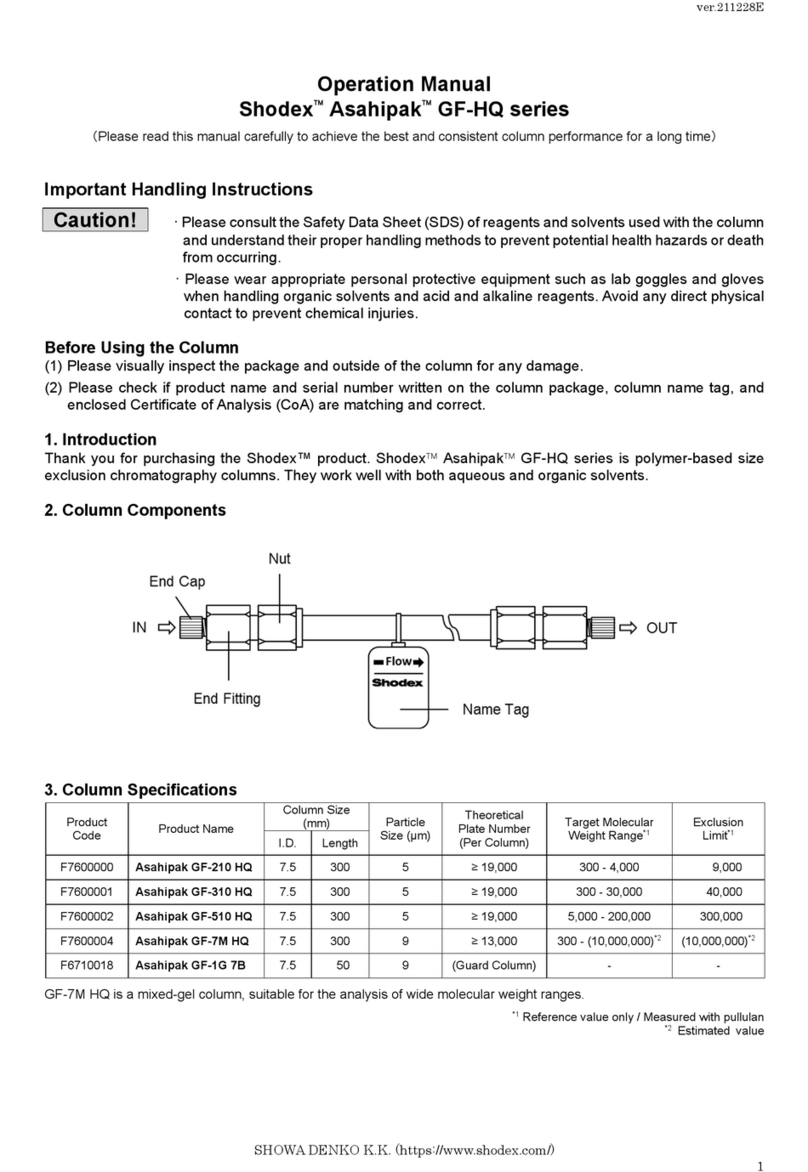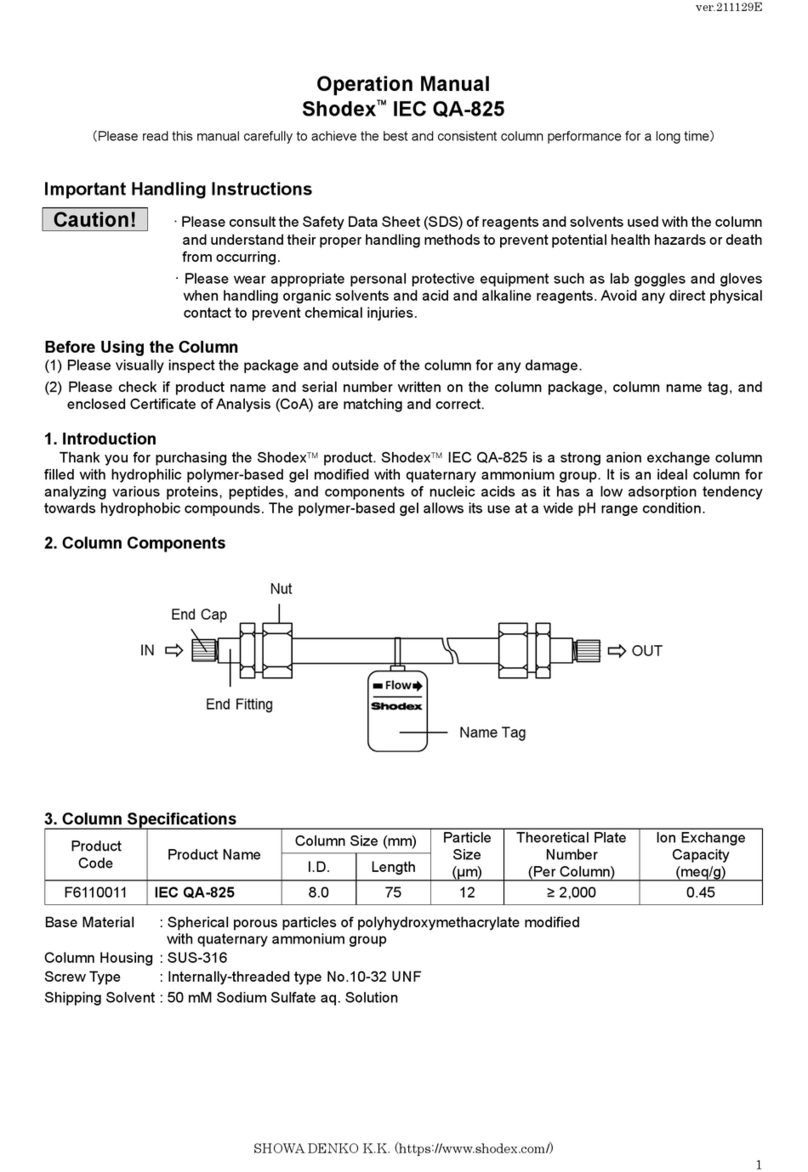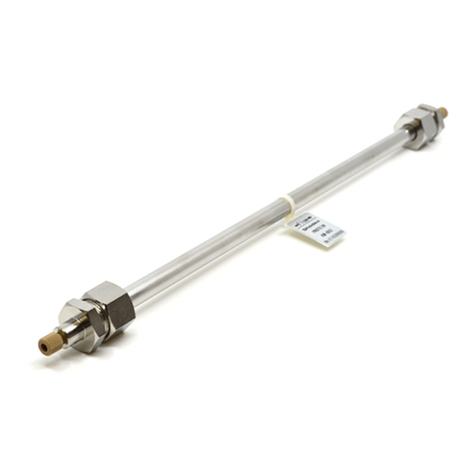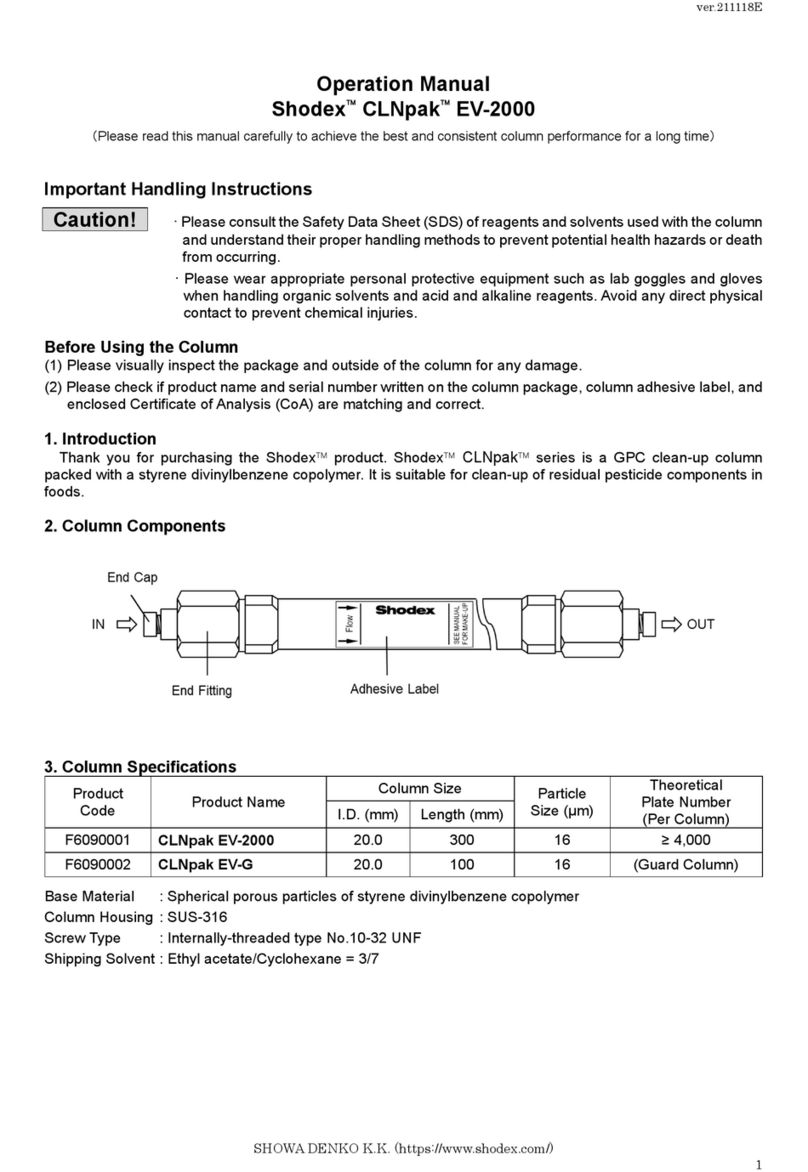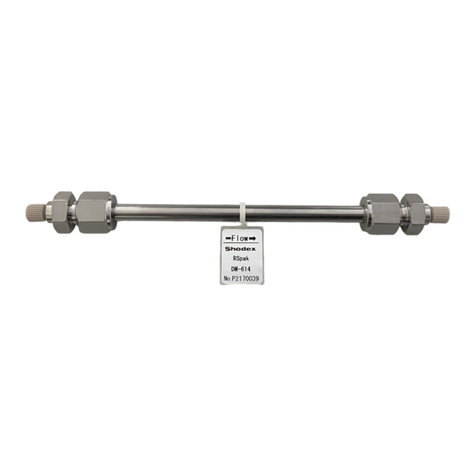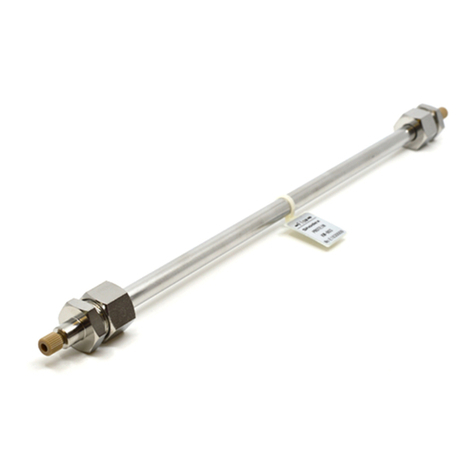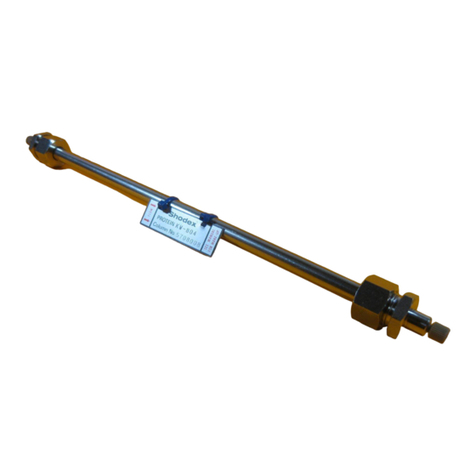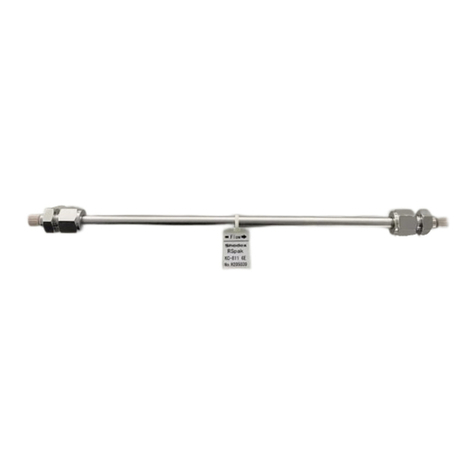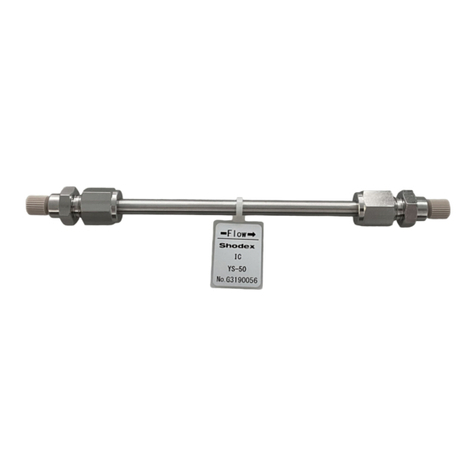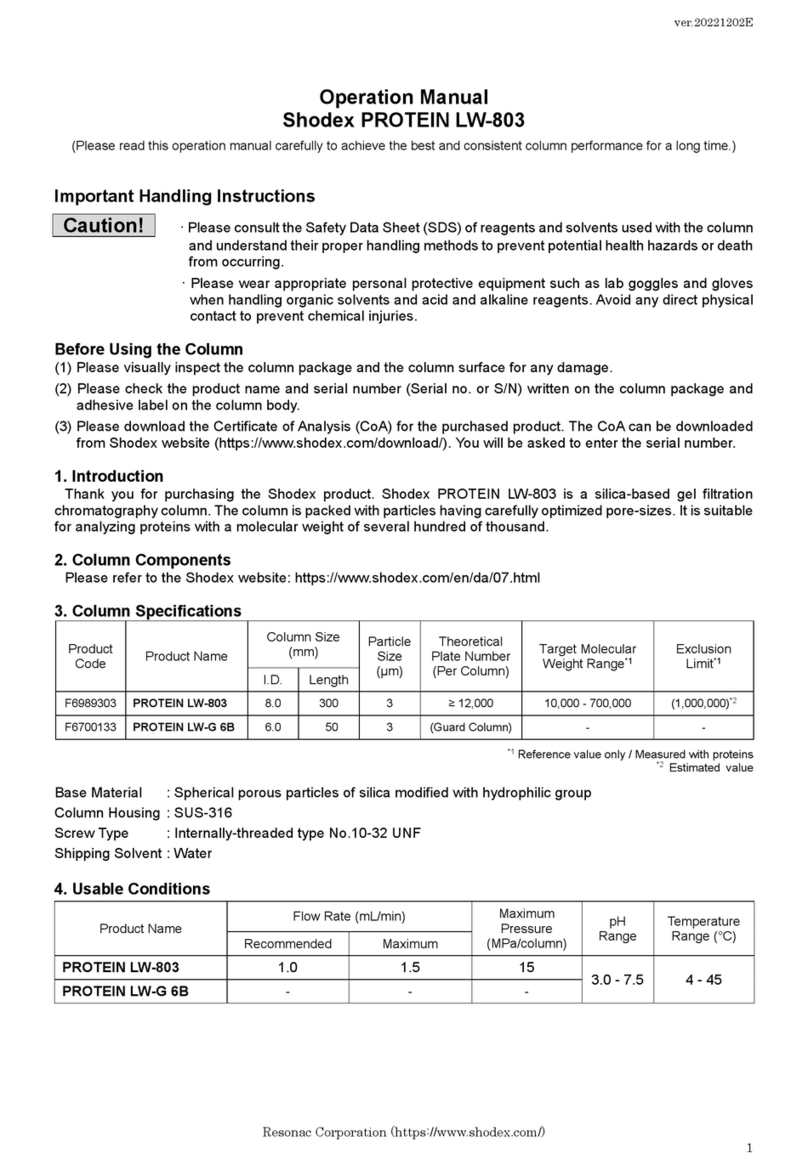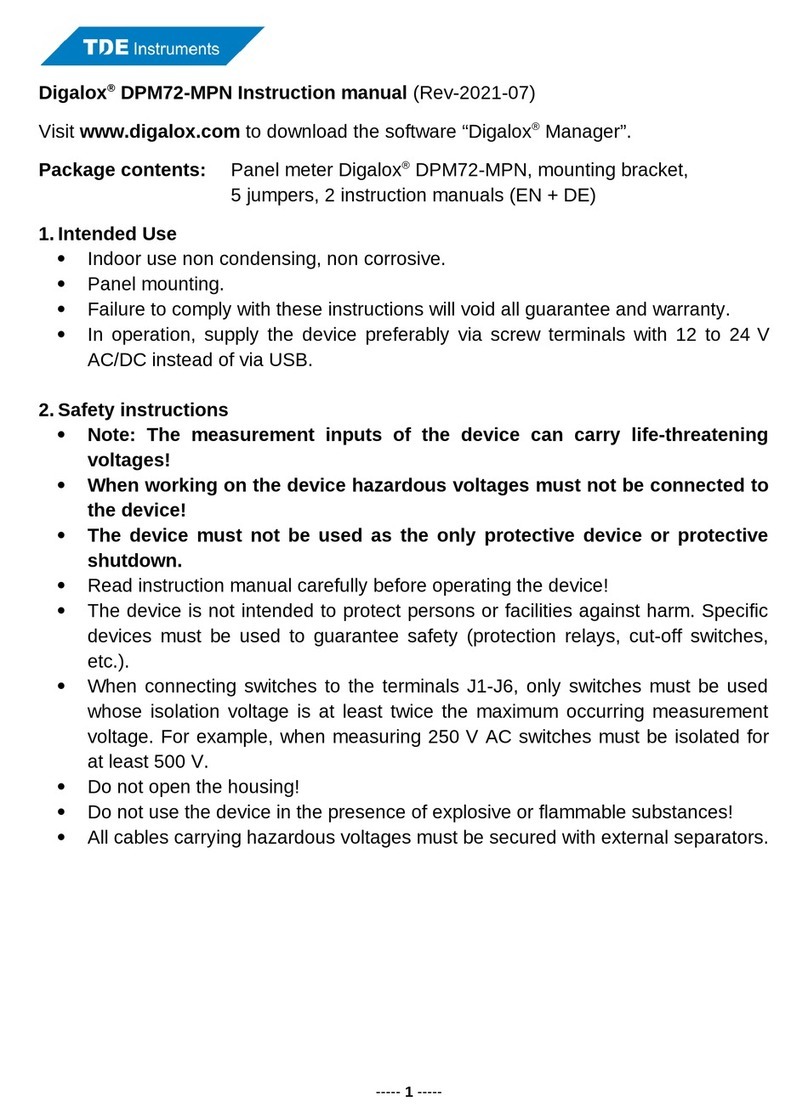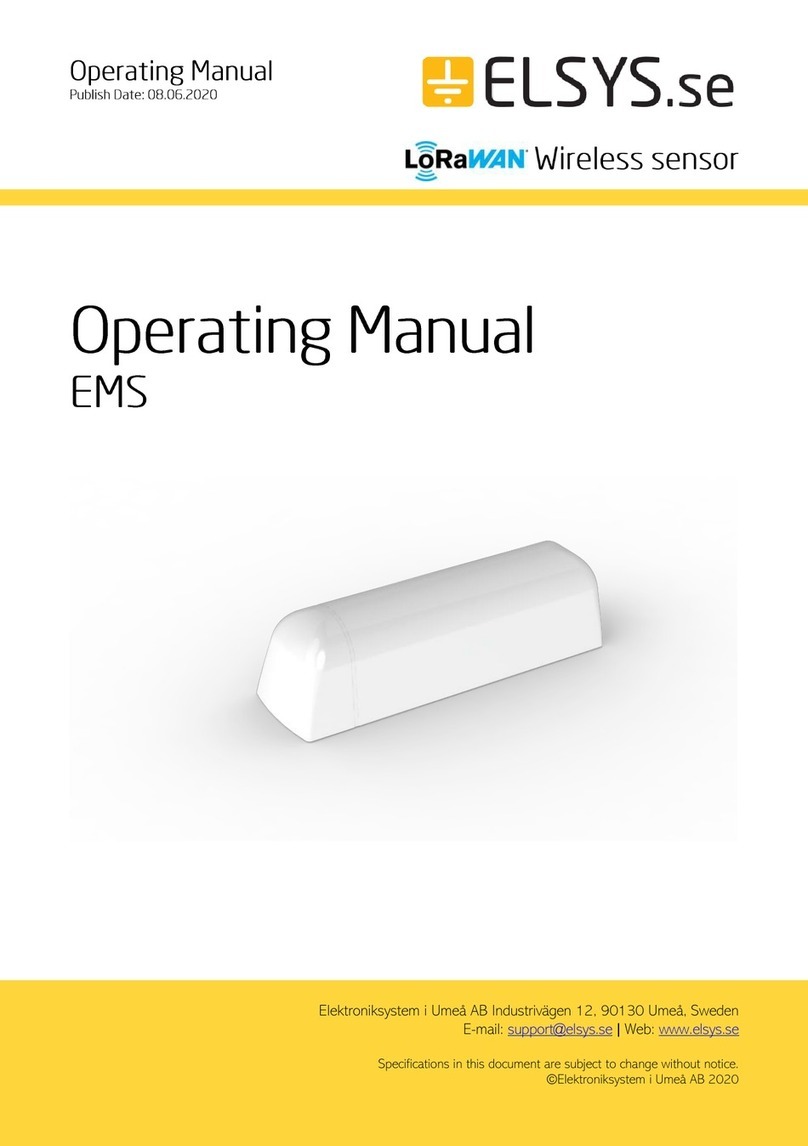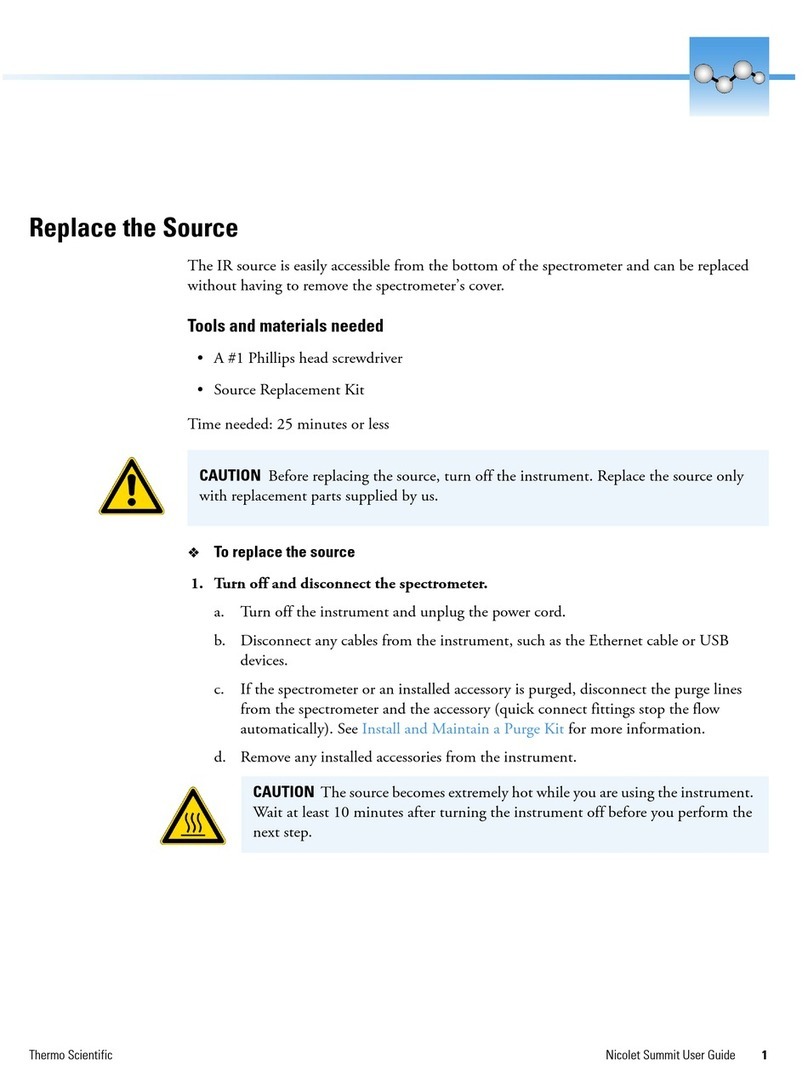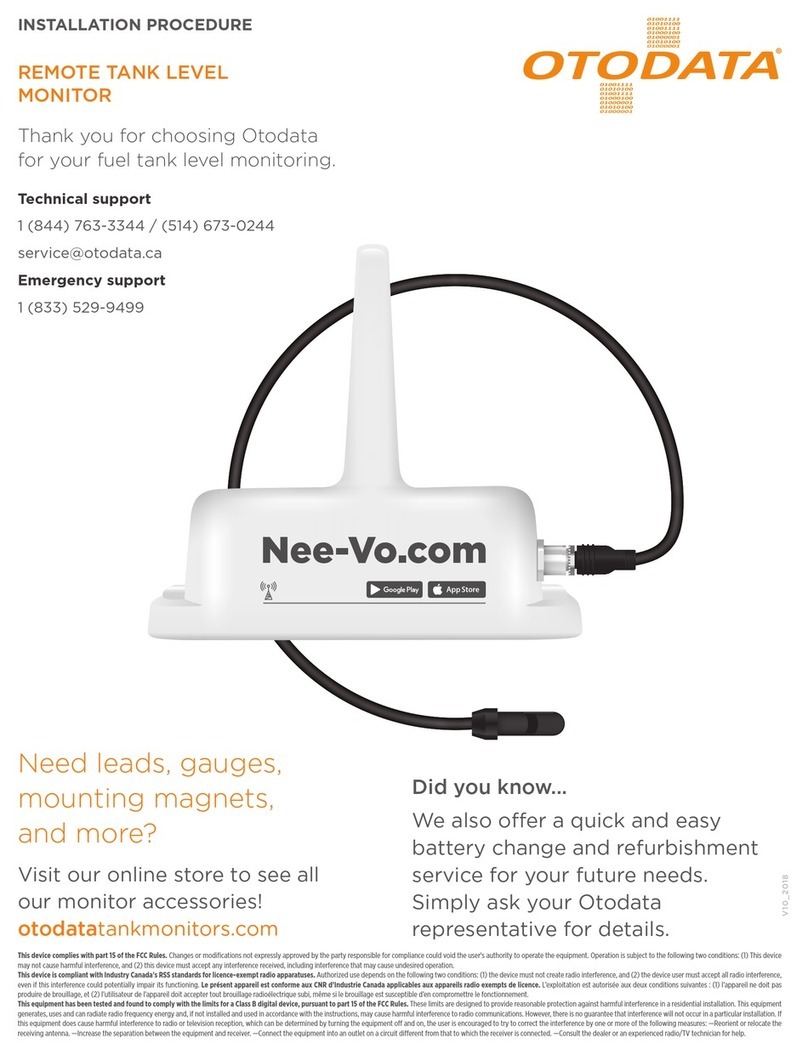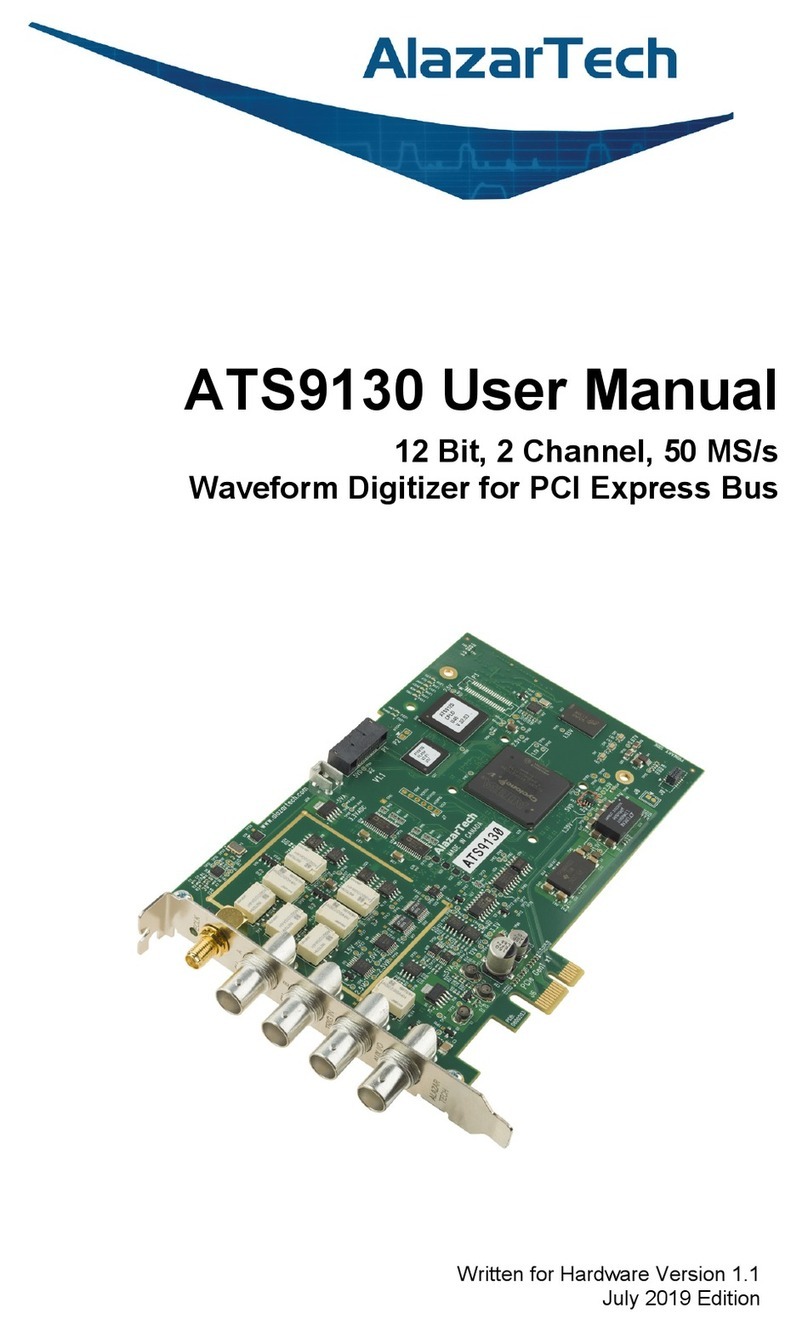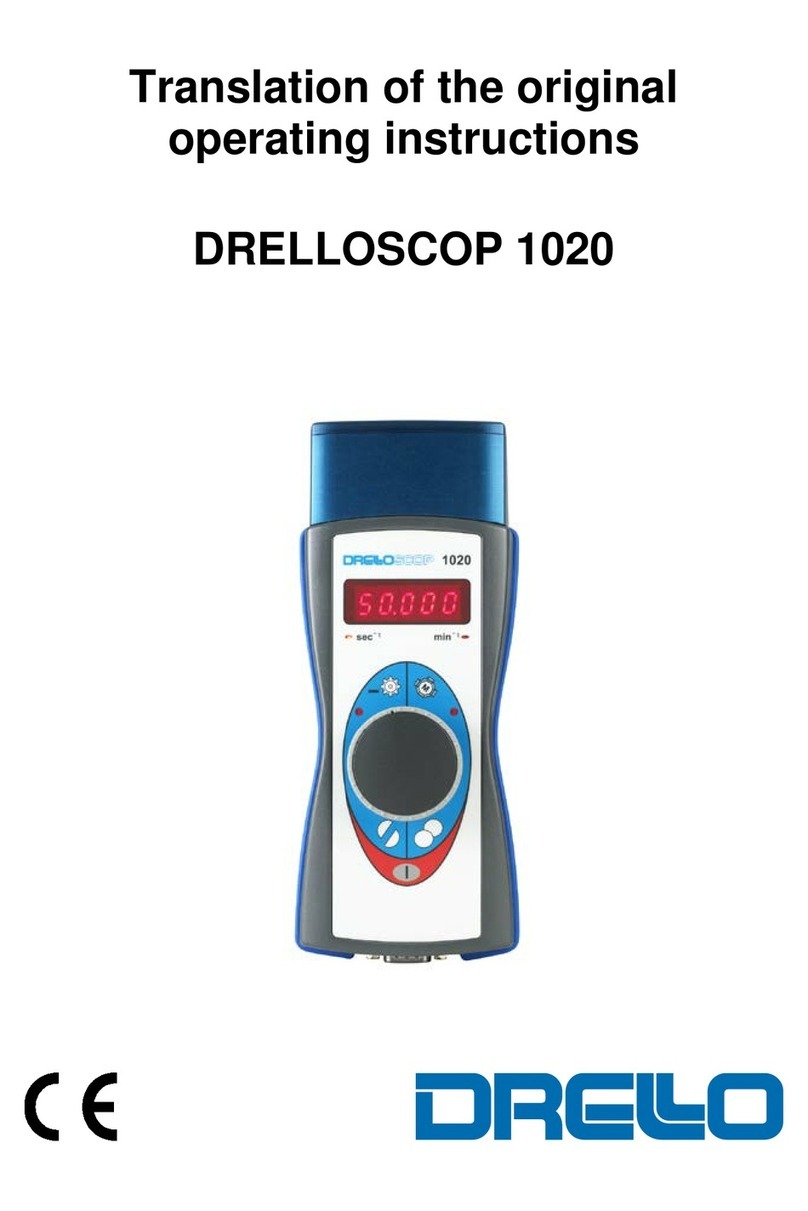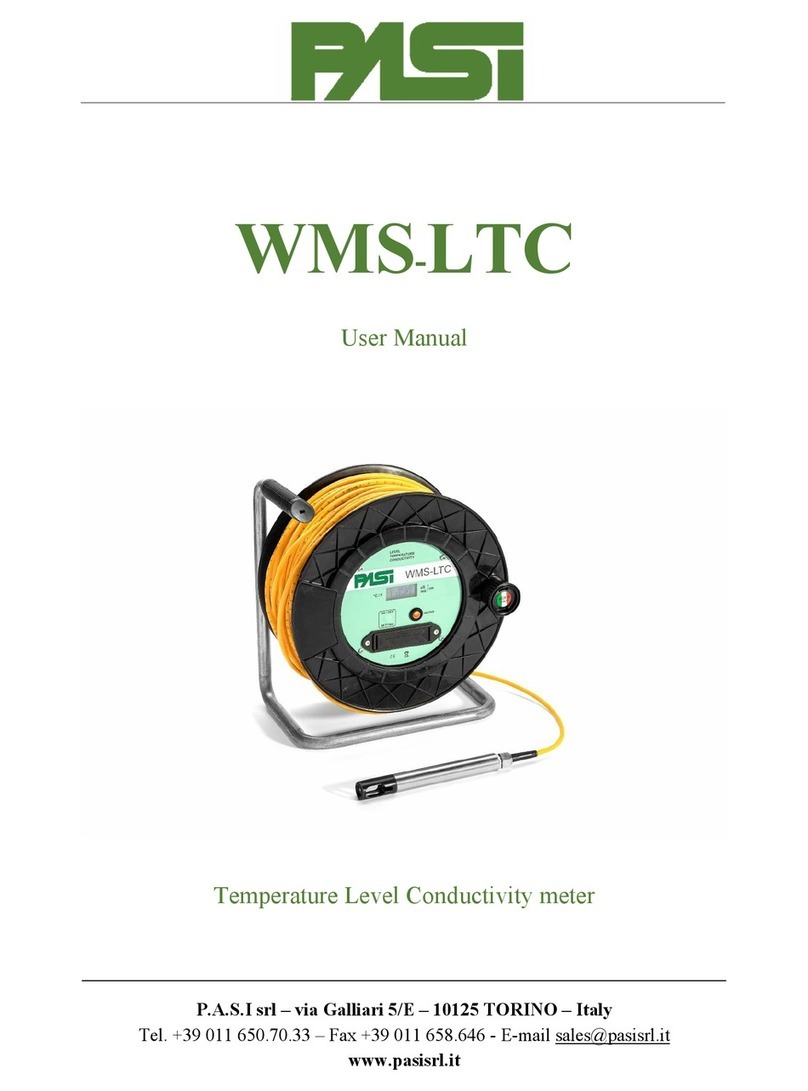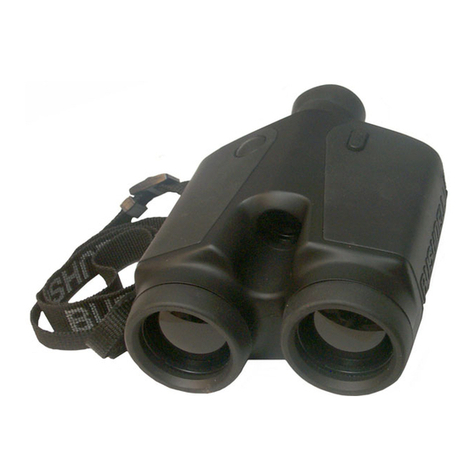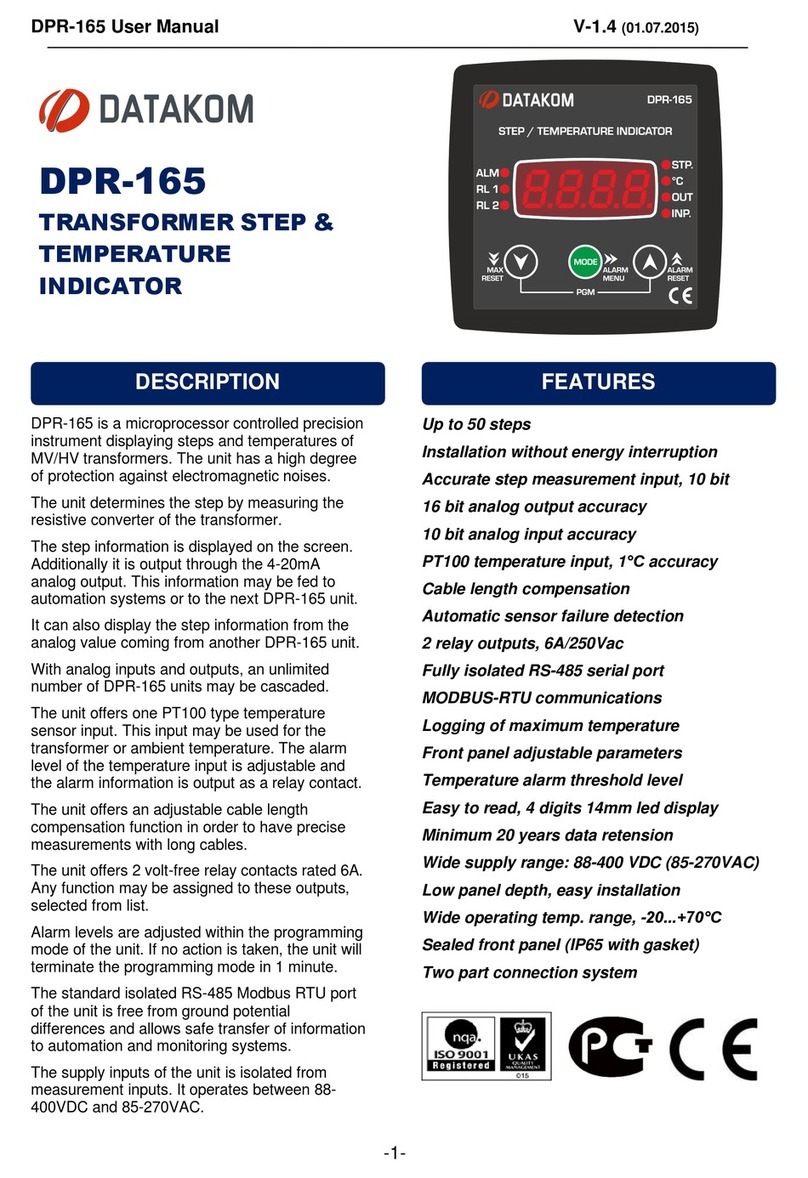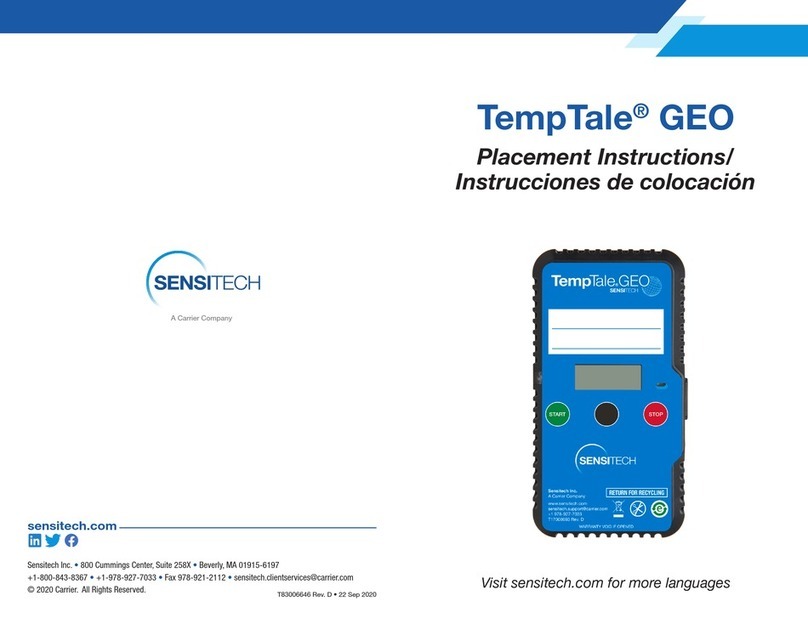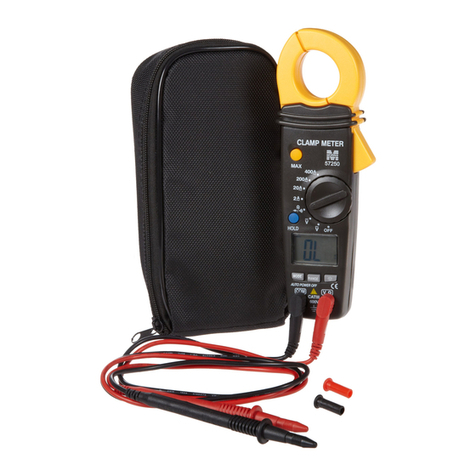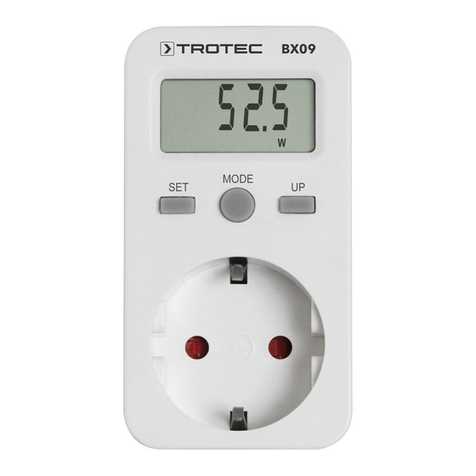
ver.211015E
SHOWA DENKO K.K. (https://www.shodex.com/)
2
4. Usable Conditions
*1 When analyzing under 40 °C, set the flow rate at less than 0.5 mL/min to reduce the column load.
*2 Increased temperature slows down the formation of sugar anomers, and thus prevents peak splitting.
Usable solvents are listed below.
(1) The standard eluent is water.
(2) Up to 20 % (v/v) acetonitrile or ethanol is usable.
Caution! · The eluate may contain lead counter ion attached to the sulfo group. In particular, presence
of acids, bases, or inorganic salt ions in the eluent or sample makes it easier for lead ion
to desorb. Please be careful when disposing the eluate.
Attention! · Use the column within above stated flow rate, pressure, and temperature ranges. Using
the column outside the given range may damage the column and lower its performance.
·Column pressure is influenced by the eluent composition, flow rate, and column
temperature. When changing the eluent compositions, adjust the flow rate and column
temperature so that the column pressure remains below the usable maximum pressure.
5. Eluent Preparation
(1) Degas the eluent fully to prevent the formation of air bubbles.
(2) Presence of small debris or insoluble substances may result in deterioration of the column and/or they appear
as noise on the chromatograms. Filter the eluent with a 0.45-μm disposable filter to prevent the problems.
Attention! · Whenever water is required, use ultra-pure water freshly generated by a water purification
system or water from a newly opened HPLC grade distilled water bottle. Use HPLC grade
organic solvent whenever possible. Solvents left in an opened bottle for a long time should
not be used. The content may have been changed, absorbed moisture, or has been
contaminated.
· Always use freshly prepared solvents. Solvents stored for a long time may have changed
their compositions and may influence elution patterns and/or damage the column.
Note · Use of on-line degasser is recommended.
6. Sample Preparation
(1) If possible, use the eluent for analysis to dissolve or dilute samples. If this is difficult, use a solvent which
has a composition that is as close as possible to the eluent's composition, but which fully dissolves or dilutes
the sample. When gradient elution is used, it is recommended to use the initial eluent to prepare the sample.
(2) Filter the sample solution using disposable 0.45-μm filter to prevent the column from clogging or deteriorating.
(3) Recommended sample injection volume is less than 10 μL per column.
(4) When analyzing an acidic or a basic sample, make sure to neutralize the sample prior to the injection.
(5) When a sample contains cations other than lead ions (the pretreated sample after neutralization), remove
them by using a cation exchange resin.
(6) When a sample contains protein or lipid, make sure to remove them prior to the injection. Proteins may be
removed by ultrafiltration or by adding acid or acetonitrile. If using acid to remove the protein, neutralize the
sample before injection. If using acetonitrile, make sure that the final acetonitrile concentration is less than
20 % (v/v).
(7) When a sample contains a large amount of organic acids, use an OH-form anion exchange resin to remove
them.
(8) When a sample contains hydrophobic substances or surfactants, use a reversed-phase solid phase
extraction to remove them.
Note · Use of guard column is recommended to protect the analytical column.
Product Name Flow Rate (mL/min) Maximum Pressure
(MPa) (Per Column)
Temperature (°C)
Recommended Maximum*1 Recommended*2 Maximum
SUGAR SP0810 8C 0.5 - 1.0 1.0 1.0 70 - 85 95






